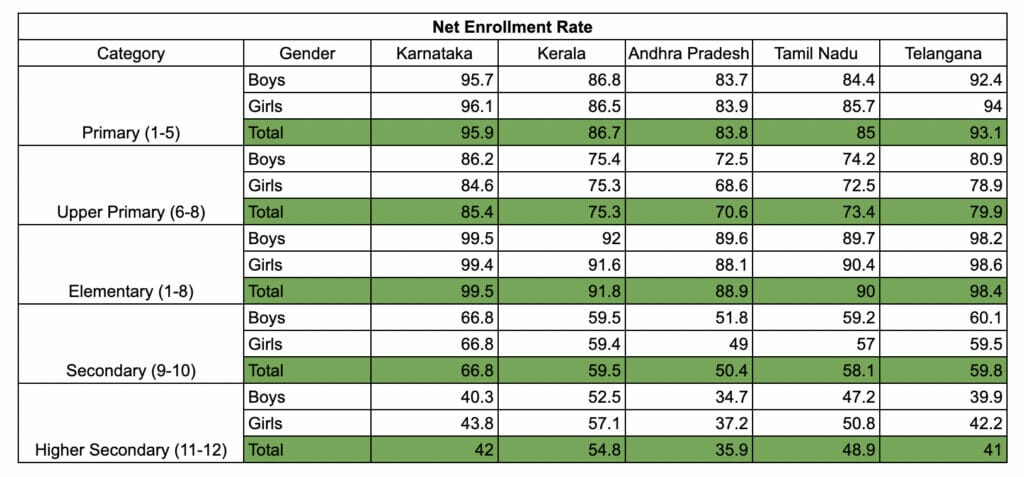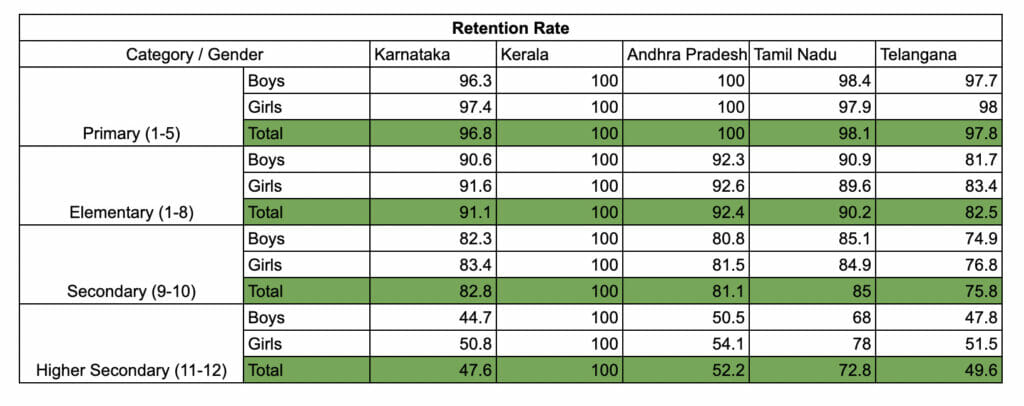Schooling isn’t always a uniform affair in Bengaluru. The quality of education varies with the school examination board, the syllabus, and whether the institution is run by the state or not.
I spoke with the headmistress and teachers of a government secondary school in Byatarayanapura to get an insight into how their students are faring in their studies.
The challenge of attendance

The stigma surrounding the quality of education in government schools is the primary reason for a lower enrolment rate. Suma (name changed), the headmistress of the government secondary school in Byatarayanapura, observes that the Herculean task before her teachers is to ensure maximum attendance of students. This is despite the fact that the school stands second in the taluk level for its performance. “They (students) have to come to the school. Once that is done, my teachers ensure they perform well,” says Suma.
The average class strength in this school is 40 students. Out of these, five to six students don’t regularly attend classes. To ensure they attend classes, the teachers contact the students and parents through phone calls and personal visits to their homes. “Children have several distractions especially during their teenage years. Boys tend to imitate heroes from movies and tend to not attend school. And because they do not attend classes, they miss out on the syllabus and they aren’t able to perform well in tests and exams. This fear of failure also keeps them from attending classes, ”says Manjunath, a social science teacher in the same school.
Lack of co-operation from parents
The school has experienced teachers. It conducts periodic tests, bridge courses, and employs other teaching techniques to help the students. The teachers make an extra effort to teach the students well. However, the parents who send their children to private schools are more supportive of their children’s education and are better educated, observes Manjunath.
Majority of the children enrolled in this government school come from low-income households. Most of the parents are either uneducated or have very little education and earn their living doing manual jobs. “If the child is good in academics, then the parents aren’t supportive enough. If the parents are supportive, the ward doesn’t have any interest in academics. Kids of single parents, children who come from difficult home environments, and daily wage workers’ children study here. It is rare that a child comes from a home that has an emotionally and financially stable household, ” says Suma.
Since these parents do multiple jobs or work long hours to make ends meet, they often have very little time to spend with their children. There is less than 40% attendance of the parents in the monthly parent – teacher meetings.
Read more: How community learning centres are bridging the gaps in Bengaluru’s education infrastructure
A major concern that the teachers raise is the lack of cooperation from parents. “They (parents) leave for work before their children leave for school, and return home late in the evening. So they are unaware if their children actually went to school or not. So students spend the day at home since they have no one to supervise them,” says Manjunath, explaining the reasons for absenteeism in his class.
Medium of instruction
This school has both English and Kannada mediums of instruction. After seventh grade, the Kannada medium students with above average marks can choose English as medium of instruction, from the eighth grade onwards.
Most of the children who switch to English as the medium of instruction are of usually above average academic calibre and who are often interested in academics, which is why they perform better than their Kannada medium counterparts, say the teachers. “The children lack the skill to write their answers in Kannada,” says Subalakshmi, who handles the Kannada medium division in the school.
Inability to write organised answers and to articulate their thoughts in a systemic manner are common traits of these students. Irrespective of the medium of instruction, students are unable to articulate their points in a coherent and structured manner.
This issue starts from the lower classes and is never addressed. For example, when solving math problems students fail to write them in an organised manner or when writing answers in other subjects, they often don’t use punctuations and write incorrect spellings. When basic requirements such as these aren’t fulfilled it isn’t surprising when students fail to express in words the concepts that they have comprehended. This problem snowballs and becomes a challenge for students when they write their SSLC examination.
“Be it English or Kannada medium, the students are unable to articulate the concepts even though they’ve comprehended it. They often answer “what” to a “why” question,” says Krithika P, a Teach For India Fellow in the same school.
Students excel in spite of challenges
The school has a fairly good infrastructure in place. It has a large quadrangle, ventilated classrooms, smart TV as teaching aid, a STEM lab (installed by an NGO in the city), and a library. Like any other government school, mid-day meals, uniforms, and study materials are provided to the children.

The school encourages their students to participate in various inter-school and intra-school extracurricular activities. Prathibha Karanji is an annual event that has literary and cultural competitions, in which the school regularly participates and excels. “We have taluk-level sports players, dancers and district level debaters, ” says the headmistress about her students’ accolades.
In spite of the lack of support from parents, the school had around 87% pass percentage in the previous year’s SSLC examination, which is higher than the state average of 85.63%. The salaries of teachers and administrators are credited regularly, the children are provided with all amenities, such as uniforms, lunch, and study equipment.
A primary concern that government schools face is maintaining the infrastructural facilities provided. As for this school, their monthly maintenance amount has been delayed for a few months due to administrative hurdles and the headmistress spends a small sum from her pocket to maintain the facilities.
Read more: How have government schools fared in terms of enrolment and dropout?
The school is supported by the non-profit, Teach For India (TFI) through their full-time, paid fellowship programme, where teaching is seen as leadership. They work closely with the school teachers and administrators. They are responsible for planning and maintaining teaching records and ensuring their students get an excellent education.
They support the teachers in conducting extra classes for students performing poorly in academics and work alongside the teachers to ensure regular attendance of the students. Currently, there are eight Fellows teaching in both the primary and high school divisions of the school.
The current library in the school was set up by the TFI Fellows, and they intend to make it better. Plans to have a science lab and a science exhibition are in the pipeline. “They are one more feather in our cap. They challenge the students to grow more by raising relevant questions we might have missed. They help in the overall development of the children,” says Manjunath.
“The Fellowship experience includes community visits, ensuring accountability of parents, and helping them out in need. It is not teaching a subject, it is teaching a student. You cannot categorise the work and do only a portion. This is a service initiative. Administrative work, and other asks, are what make the Fellowship more fulfilling,” says Rohit Venkatesh, a TFI Fellow.
The need of the hour is to revamp the public education by increasing the number of schools and providing quality education, especially till the higher secondary school level.
Enrolment and retention rates in Karnataka schools
According to the 2021-22 Unified District Information System for Education Plus (UDISE +) report, among the five south Indian states of Andhra Pradesh, Karnataka, Kerala, Tamil Nadu and Telangana, Karnataka has the highest net enrolment rate in schools while Kerala has the highest retention rate. (Refer to the tables below).


However, in absolute terms, the state has a good retention rate across education levels, except in the higher secondary level. This means that most students drop off after secondary school or the tenth standard. Several factors such as socio-economic conditions, location of the schools, accessibility, and availability of amenities contribute to these rates.
Despite the higher number of schools by the state government, the enrolment rate for 2021-22 is 44.3% in government schools and 54.95% in private and government-aided private schools. In 2012-13, these rates were 50.4% and 49% for government schools, private, and government-aided private schools, respectively.